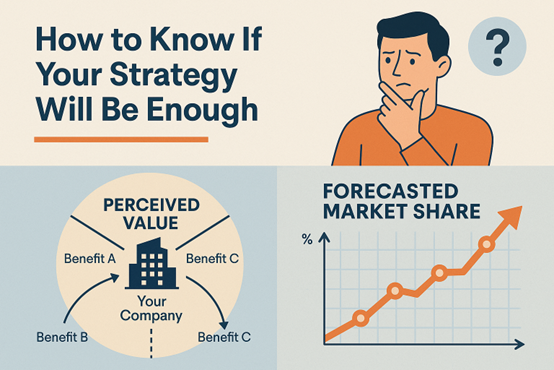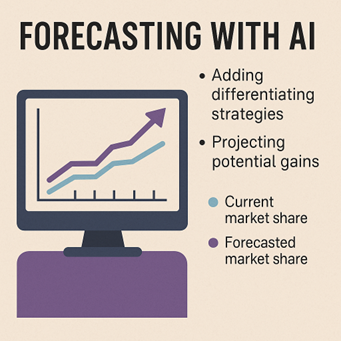Forecasting competitive impact starts with measuring perceived value. AI can help.
For years, strategy discussions have centered on what to do—new ideas, differentiators, bold shifts. But in fast-moving markets, the question that matters most is more fundamental: will it be enough?
That’s where AI is changing the game. Not by generating more ideas, but by helping teams answer a deeper question: Will this strategy move the needle? If not, what would?
1. Start with Perceived Value, Not Guesswork
The core of this shift is a framework called Ability to Win. It measures your value from the “outside in”—through customers’ eyes, not internal opinions. You identify the benefits that actually drive buying decisions, then rate yourself and your competitors on how well each deliver.
The result is a score. A quantifiable, evidence-based view of where you stand in the market—and why.
2. Now Add AI: Forecast the Impact of Change
This is where it gets powerful.
Once you’ve quantified your current perceived value, AI can help you simulate what happens next. What if you close a gap on a key benefit? Launch a targeted campaign to reframe how customers think? Improve execution on an existing strength?
AI can model how those shifts would improve your Ability to Win and translate that improvement into projected market share gains.
In other words:
- Is this differentiator worth the investment?
- Will it help you catch a market leader—or protect your lead?
- Are you doing enough to enter a new market with real impact?
AI doesn’t replace strategy. But it finally gives you a way to test strategy before you execute it.
3. From Hypothesis to Business Case
In recent client sessions, the team has used AI to not only identify potential strategies, but to pressure-test them. Some simulations show clear upside: increased share, high ROI, and a fast path to impact. Others reveal that even big investments won’t move the needle enough to be worth it.
That kind of clarity that is delivered in days, not months, is where strategy becomes operational.
Not Just Strategy. Strategy That’s Calibrated.
This approach doesn’t replace your intuition, your experience, or your team. But it grounds all three in customer reality.
You can:
- Back up a bold move with numbers
- Avoid wasted effort on underpowered plans
- Create alignment across teams based on a clear forecast
In markets moving this fast, the key isn’t just to differentiate. It’s to know before you act whether your differentiation will be enough.

 Mary Abbazia
Mary Abbazia Tom Spitale
Tom Spitale Sean Welham
Sean Welham
